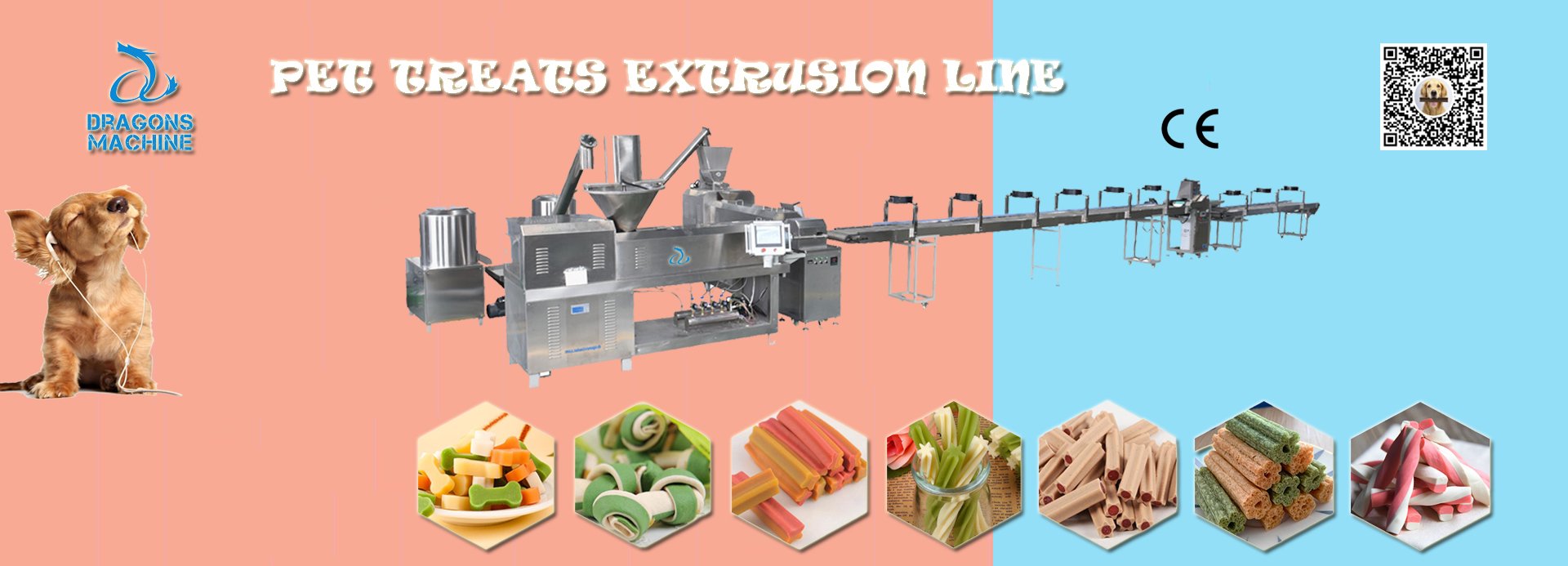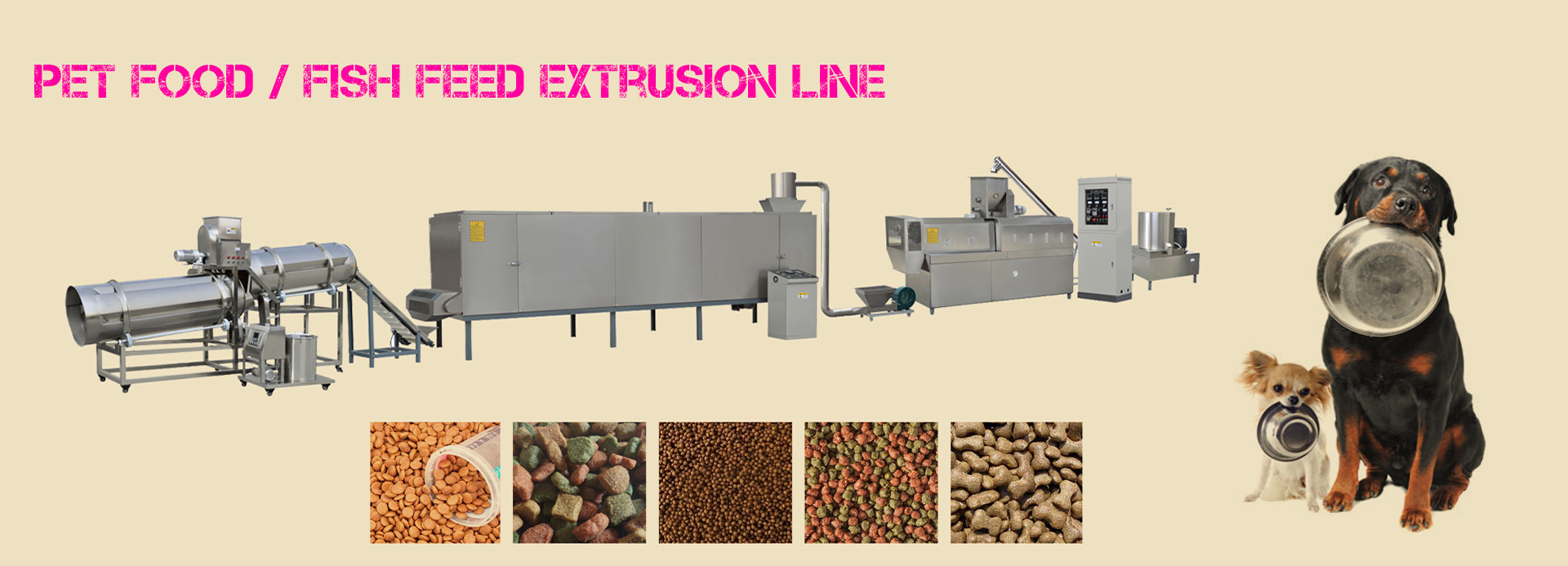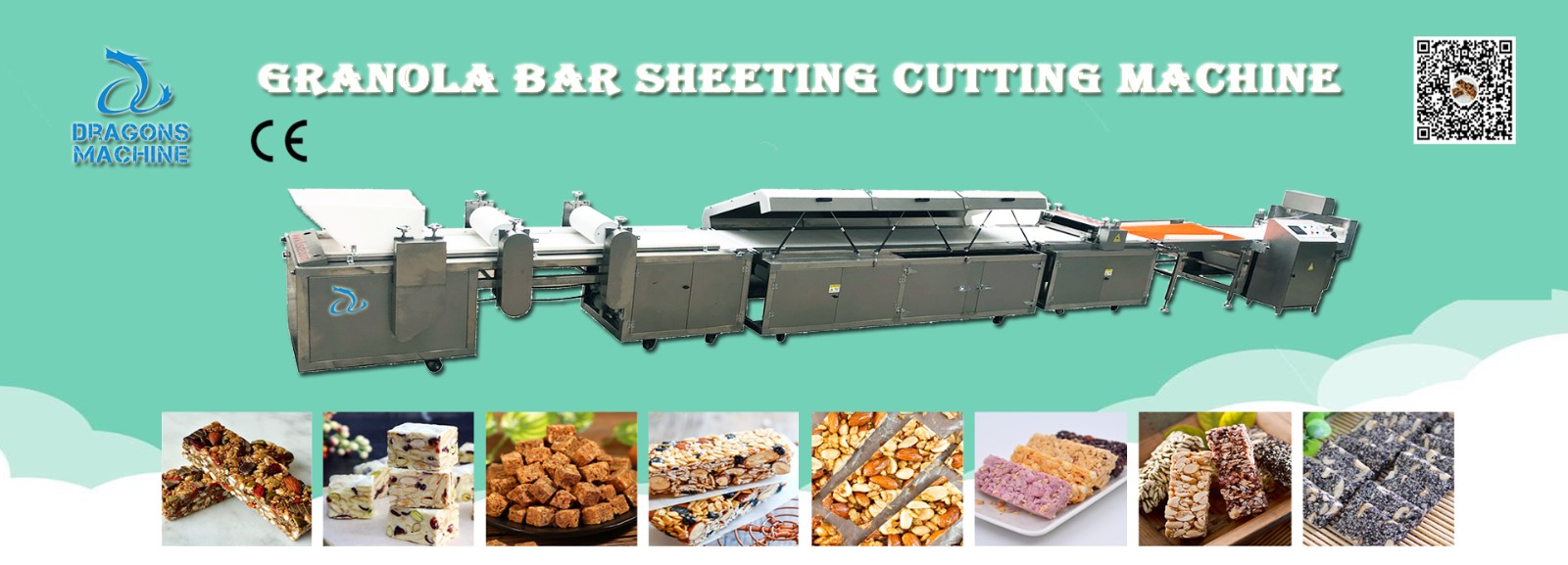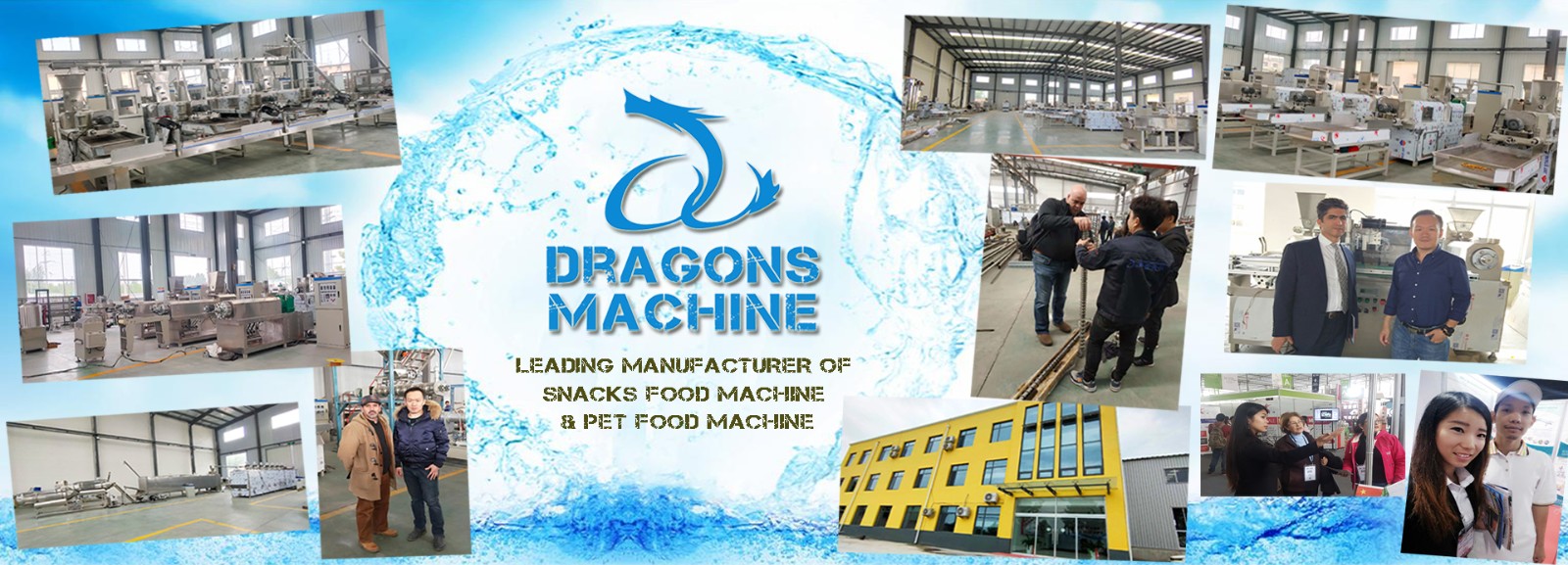Cereals are considered the ideal vehicle for providing supplemental nutrition because they can represent a large part of the daily diet, are often served with milk, and have broad appeal.
▲Breakfast Cereal Processing
Breakfast cereals go through several stages before they become a final product. Early cereals have separate steps of blending, cooking, molding, drying and coating.
Breakfast cereal processing also has several types of manufacturing processes, depending on the type of cereal, such as flaking, puffing, chopping, etc.
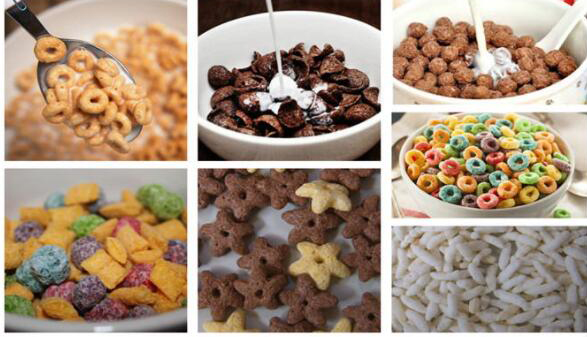
➽ Cereal flake production
Flaked cereals can be made from whole grains or extruded pellets. The basic principle is to allow the cooked grains or pellets to temper for several hours to stabilize the moisture content. After tempering is complete, the grains or pellets are subjected to several tons of pressure and flattened by two large metal rollers. The resulting flakes will be transferred to an oven where they will be exposed to hot air to remove excess moisture and bake them until the desired color and flavor is achieved.
For flaked grains made from whole grains, particle size is important to maintain the overall product quality. In most cases, unmodified corn starch will be added to the mixture so that the flakes can withstand processing. After cooking, the moisture content of the flakes needs to be between 28% and 32%. Controlling the moisture and texture levels of whole wheat flaked grains occurs primarily during the initial cooking, drying and tempering stages. For extruded flakes, this occurs primarily after extrusion. However, the optimal moisture content of the finished product needs to be between 1% and 3% to ensure the correct crunchiness and toughness.
➽ Puffed grain production
Puffed grains are usually made from rice and wheat, using a device called a gun. After cooking, cooling and tempering, the rice grains will be partially flattened between metal rollers in a process called bumping. Once bumped, the rice grains are dried again and placed in a high-pressure steam oven (gun) where they expand. For this process to be effective, the temperature needs to be between 400º and 500ºF, and the pressure should be approximately 200 lbs. pounds per square inch The oven will suddenly release pressure, forcing the grains to quickly release steam and expand.
At this point, the moisture content of the puffed grain will be around 5% to 7%, which needs to be reduced to between 1% and 3%. It is also important to note that these types of grains absorb moisture easily, which means they also need a coating and the proper type of packaging material to keep them from spoiling and retaining their crispness over time.
➽ Shredded cereal production
The most common type of cereal used for shredding is wheat. To make shredded grains, the wheat is boiled in water to allow the water to fully penetrate the grains. It is then tempered before passing through two metal rollers. The difference between these rollers and the rollers used for flaking cereal is that one roller is smooth while the other is grooved. There is also a metal comb resting on the grooved rollers, each with a tooth inside the groove. The grain is shredded by these teeth as it passes through. The result is a continuous ribbon that will be cut to the proper size and baked until the correct color and dryness is achieved.
It is important to temper cooked wheat for a maximum of 24 hours before chopping, as this allows for uniform moisture and hardens the grain due to starch regrowth. If it is not tempered for a long time, the chopped wheat will be too sticky and too pasty for further processing.
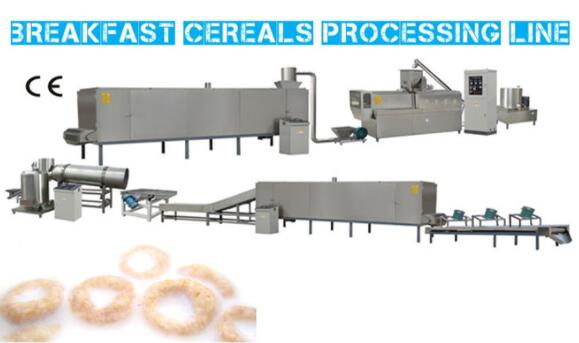
▲Coating
After the initial processing stage, if sugar or other flavoring agents are to be applied to the flakes, they are passed through a coating drum or band and then dried again. Coated or uncoated flakes are usually sprayed with a vitamin emulsion in the final process, followed by another drying step, and then packaged.
Sugar coatings commonly used in most cereals combine a sugar formulation and application method that ensures that the sugar crystals have the correct color, flavor, size and structure when dried. Beet sugar or sucrose is commonly used as a coating, but brown sugar or honey can also be used as a partial substitute for white sugar. The addition of oil also helps prevent caking.
In addition to sweetening the grains, the sugar coating provides an additional layer between the milk and the grains, thus extending their crispness. Adding a different starch, such as dextrin or maltodextrin, to the surface of the grains will help improve storage stability without adding sweetness to the overall flavor. On the other hand, high fructose corn syrup and crystalline fructose can be used to provide additional sweetness and adhesion properties for dry flavor bit applications. In sweetened grains, the visibility of the coating will also add a degree of consumer appeal. Therefore, the coating can be up to 50% of the weight of the grain.
Vitamins and minerals (if used) are added last, as they cannot withstand the high temperatures of the earlier process steps.
▲Packaging and quality control
While some grains, such as cracked wheat, are fairly resistant to moisture spoilage and can be placed directly in cardboard boxes, most other grains need to be packaged in sealed, waterproof plastic bags. These are also placed in cardboard boxes to prevent them from spoiling. Current trends show that today's customers are more interested in flexible packaging and sustainable materials. Traditionally, rigid plastics such as polypropylene, polyethylene, polyethylene terephthalate, polyamide or ethylene vinyl alcohol have been used for breakfast cereal packaging. However, more and more cereal manufacturing companies are seeking more sustainable materials, such as plant-based packaging.
More convenient packaging options, such as resealable, flexible and stand-up pouches, are also being considered. These options tend to eliminate the need for traditional cardboard boxes and reduce the overall volume of the package overall. Disposable pouches are also a trend to watch.
For manufacturers, ready-to-eat grains have been profitable, challenging and a source of technological achievement. For consumers, it remains nutritious, enjoyable, and often good value for money. We can provide a complete line of breakfast cereals, including flake rolls and dryers, and welcome your inquiries.















